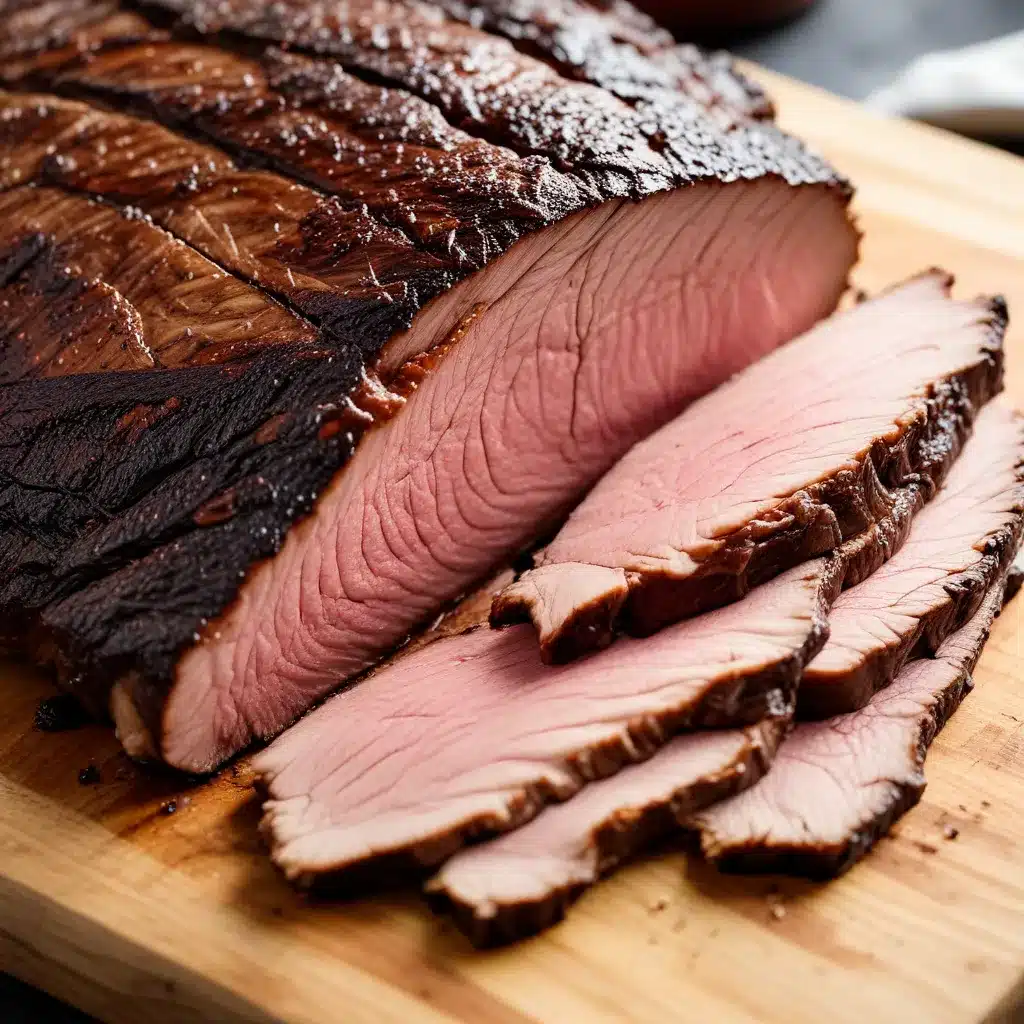
As a veteran pitmaster at Creekside BBQ, I’ve dedicated countless hours to perfecting the art of brisket preparation. This labor-intensive cut of meat has long been the holy grail for barbecue enthusiasts, and I’m here to share my personal insights on how to achieve that coveted melt-in-your-mouth texture.
Understanding the Science of Brisket Transformation
Brisket, with its robust muscle fibers and dense connective tissue, can be an intimidating cut for the uninitiated. However, the secret to its legendary tenderness lies in the patient application of heat and time. As the brisket cooks low and slow, often between 225°F and 250°F, the collagen within the meat gradually breaks down, transforming it into gelatin. This alchemical process is the key to unlocking that sought-after melt-in-your-mouth quality.
The internal temperature of the brisket is the linchpin of this transformation. Typically, we aim for a final internal temperature between 195°F and 205°F, as this range signifies the point where the connective tissue has fully rendered and the brisket has reached its peak tenderness. However, the journey doesn’t end there. After the brisket has reached this ideal temperature, a crucial resting period allows the juices to redistribute evenly throughout the meat, ensuring every bite is bursting with flavor and moisture.
Choosing the Right Cooking Method
When it comes to brisket preparation, the choice of cooking method can significantly impact the final texture and flavor. As a seasoned pitmaster, I’ve experimented with various techniques, and I’ve found that the low and slow approach, whether in a smoker or oven, consistently yields the most sublime results.
Smoking Brisket:
For the quintessential barbecue experience, smoking the brisket low and slow is the way to go. By maintaining a steady temperature in the 225°F to 250°F range and allowing the meat to cook for 8 to 12 hours, the smoke permeates the brisket, imparting a rich, complex flavor profile. The key is to choose the right wood, such as oak, hickory, or mesquite, and to monitor the temperature and smoke levels throughout the cooking process.
Oven-Roasted Brisket:
While not as traditional as smoking, oven-roasted brisket can also produce exceptional results. By cooking the brisket at a low temperature, usually between 275°F and 300°F, and allowing it to braise in a flavorful liquid, such as beef broth or red wine, the meat becomes incredibly tender and juicy. This method is particularly well-suited for those without access to a dedicated smoker or for inclement weather conditions when outdoor grilling is not feasible.
Regardless of the cooking method, the common thread is the patient, low and slow approach. Rushing the process or exposing the brisket to high heat can result in a tough, dry end product. Embrace the journey and trust the process, and you’ll be rewarded with a brisket that melts in your mouth.
Pitmaster Tips for Brisket Perfection
As an experienced pitmaster, I’ve learned that achieving brisket perfection is as much an art as it is a science. Here are some of the key tips I’ve accumulated over the years:
-
Trim the Brisket Properly: Start by removing any excess fat and silver skin from the brisket. This will allow the rub and smoke to penetrate the meat more effectively, enhancing the overall flavor.
-
Season with Care: Develop a signature rub that complements the rich, beefy flavor of the brisket. Experiment with a blend of spices, herbs, and aromatics to create a unique flavor profile that sets your brisket apart.
-
Monitor Temperature Religiously: Invest in a high-quality meat thermometer and keep a close eye on the internal temperature of the brisket throughout the cooking process. This will ensure you hit that sweet spot between 195°F and 205°F.
-
Master the Stall: Brisket is notorious for hitting a temperature plateau, often around 155°F to 165°F, where the evaporative cooling effect can slow down the cooking process. Be patient and resist the urge to crank up the heat, as this can lead to drying out the meat.
-
Allow for Proper Resting: Once the brisket has reached the desired internal temperature, resist the temptation to slice into it right away. Instead, let it rest for at least 30 minutes, or up to an hour, to allow the juices to redistribute throughout the meat.
-
Slice Against the Grain: When it comes time to serve the brisket, remember to slice it against the grain. This will ensure each bite is tender and easy to chew, rather than tough and stringy.
-
Experiment and Adapt: Barbecue is an art form, and each pitmaster develops their own unique approach and flavor profile over time. Don’t be afraid to experiment with different techniques, seasonings, and cooking methods to find what works best for you and your preferred style of brisket.
Embracing the Journey to Brisket Nirvana
Mastering the art of brisket preparation is a never-ending journey, but one that is deeply rewarding for both the pitmaster and the eager eaters. By understanding the science behind the transformation, choosing the right cooking method, and applying the essential pitmaster tips, you too can achieve that melt-in-your-mouth brisket that will have your guests licking their plates clean.
Remember, barbecue is as much a shared experience as it is a culinary pursuit. Gather your friends and family, fire up the smoker or oven, and embark on this flavorful adventure together. At Creekside BBQ, we take great pride in sharing our knowledge and passion for the art of barbecue, and we invite you to join us on this delicious journey. Visit our website at https://www.creeksidebbq.com/ to explore our full range of products, recipes, and industry insights.
So, let’s dive in, roll up our sleeves, and unlock the secrets to brisket perfection. The rewards, both in terms of flavor and camaraderie, are truly unparalleled.

